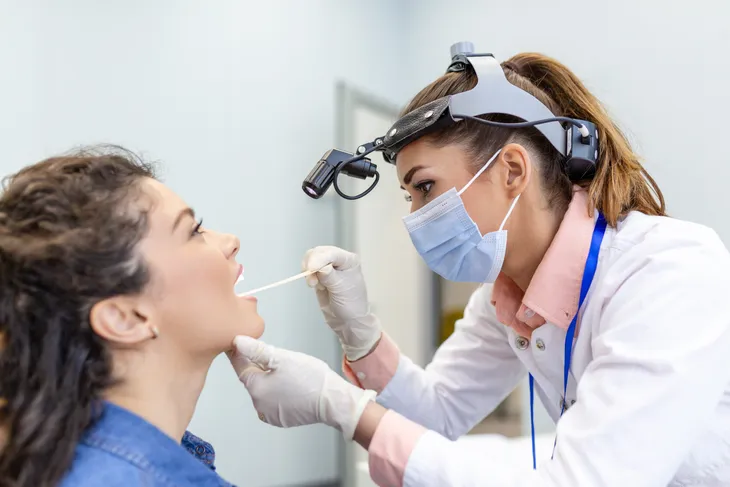Antibiotic resistance is a major threat to public health. Resistance makes it harder for physicians to treat infections and can increase the chance patients will die from an infection. What is more, the treatment of antibiotic-resistant infections poses a huge cost to health-care systems. Patients have to stay in the hospital for longer and doctors have to prescribe newer, more expensive antibiotics.
However, despite campaigns to curb misuse of antibiotics, it continues to be a problem.
For instance, antibiotics are often prescribed to treat bronchitis, sinusitis and pneumonia – all of which can be caused viruses that antibiotics cannot cure. This is because antibiotics work against bacterial infections.
So why are antibiotics being misused in this way?
Patient expectations can drive inappropriate prescribing. Studies show that physicians often write prescriptions based on their beliefs about what patients expect, even when the patient does not ask for a prescription directly. A doctor is more likely to write a prescription for an antibiotic if he or she thinks the patient expects one.
What do patients know about antibiotics?
Our team surveyed 113 patients in an inner-city emergency department in downtown Baltimore in order to determine their expectations and beliefs regarding antibiotics.
Although attempts have been made to educate patients about the differences between viruses and bacteria, we found that 48% of patients surveyed believe that antibiotics will cure a viral illness. About three-quarters of patients surveyed agreed that they would take antibiotics “just in case” or because “it can’t hurt.”
Current efforts to educate patients about the risks of antibiotic resistance focus on communicating the differences between viruses and bacteria. For example, the US Centers for Disease Control and Prevention (CDC) run a program called “Get Smart,” which advises patients about the symptoms that are typically associated with viral illnesses, and thus do not require antibiotics.
The underlying assumption in many education programs is that when patients ask for antibiotics, it is because they believe that “germs are germs.” They make no distinction, or have little understanding, of the different causes of infection. They view viruses and bacteria as just “germs”. Therefore, because antibiotics work against germs, antibiotics will make them feel better.
However, in our study we found that less than half of the patients we surveyed agreed with the idea that germs are germs, meaning that most patients understand that there is a difference between viruses and bacteria. This means that to efforts to educate patients about the difference between bacteria and viruses do not address the misconceptions that cause many patients to expect antibiotics.
The gist of germs
According to Fuzzy Trace Theory (FTT), a theory of medical decision-making, patients interpret the decision of whether or not to take antibiotics is based on how they perceive risk.
These perceptions, called “gists,” can be quite independent of the actual risk they face. For example, patients will tend to compare risks with the status quo. For example, if they do not feel well, they can take an antibiotic and possibly get better, or they can do nothing and definitely stay sick. So why not take a risk?
These misconceptions can be two-sided. Patients might believe that antibiotics have some chance of making them better. At the same time they might believe that there is basically no chance of harmful side effects from antibiotics.
We found that more than three-quarters of patients surveyed agreed with the “why not take a risk” gist. Furthermore, patients who knew that antibiotics would not work against viruses (and therefore disagreed with “germs are germs”) still agreed with “why not take a risk” gist.
Reframing the issue: antibiotics can hurt
Antibiotics are critical for treating infections, but like any medication, they are most effective when used correctly. When they are overused or misused, antibiotics can be harmful.
Many common antibiotics can have harmful side effects. These can include allergic reactions, and secondary infections, like Clostridium difficile. Secondary infections have been estimated to result in approximately 140,000 emergency department visits annually, or approximately one out of every 2,000 antibiotic prescriptions.
Serious side effects have also been documented for some antibiotics. One common antibiotic carries an increased risk of retinal detachment and another carries a risk of serious arrhythmia. Antibiotics can also have uncomfortable and costly side effects, such as diarrhea, colitis, reflux, nausea or headache.
Repeated antibiotic use can pose personal resistance-related risks, including hard-to-treat infections, increased time in the hospital and larger medical bills. Antibiotic resistance is also a significant threat to the population.
Communicating risk
So what is the right way to communicate the risks of misusing antibiotics?
Our results suggest that physicians and public health officials need to understand how patients understand risk when it comes to using antibiotics. It is important to educate patients about the differences between viruses and bacteria. But, this is not enough. Talking about antibiotic resistance is also not likely to influence individual behavior. Patients must know that antibiotics can hurt, and that when taken in the wrong circumstances, they just won’t do any good.
David Broniatowski, Assistant professor, School of Engineering and Applied Science, George Washington University; Eili Klein, Assistant Professor, Johns Hopkins University, and Valerie Reyna, Professor, College of Human Ecology , Cornell University
![]()
This article is republished from The Conversation under a Creative Commons license. Read the original article.







